You have a soft tissue ankle injury. This is a sprain to the ankle (ligament injury).
Healing
This normally takes approximately 6 weeks to heal.
Smoking will slow down your healing. We would advise that you stop smoking while your injury heals. Talk to your GP or visit www.smokefree.nhs.uk for more information.
Pain and Swelling
Your ankle may be swollen and painful. Swelling is often worse at the end of the day. It is normal to have mild pain and swelling for 3-6 months after your injury.
Taking pain medication, elevating your ankle and using ice or cold packs will help. More information below.
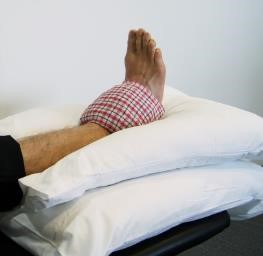
Walking and your boot
The boot (or splint) protects your ankle and will make you more comfortable. Wear the boot when you are standing and walking for the first 2 weeks if you need it. You can take it off at night and at rest. You may not have been given either if your clinician did not think it was necessary.
You are allowed to put weight through your foot. You may find it easier to use crutches in the early stages.
Exercises
It is important to start exercises as soon as possible. Instructions are below.
Follow up
A follow up appointment is not normally needed for this injury. Please contact your GP or NHS 111 if, after 12 weeks, you still have significant pain or swelling (4 weeks if under 18 years old), or you are still using the boot after 6 weeks.
Questions
If you are concerned about your symptoms, are unable to follow this rehabilitation plan or have pain other than at your ankle please contact the Emergency Department.
Caring for your injury: Weeks 1-2
Use the boot for comfort for the first 2 weeks at the most. You can remove the boot when resting and at night. Wear a long sock in your boot.
Using a cold pack will help with your pain and swelling. You can use an ice pack or bag of frozen peas wrapped in a damp towel. Put this on your ankle for up to 15 minutes every few hours. Make sure the ice isn’t in direct contact with your skin.
Try to rest your ankle, especially in the first 24-72 hours. Raise your ankle on a stool or cushions so that it is above the level of your hip. This will help to reduce your swelling.
Exercises
Early movement of the ankle and foot is important to promote circulation and reduce the risk of developing a Deep Vein Thrombosis (blood clot). If you notice any swelling or redness in the calf, please attend the Emergency Department.
Do these exercises 3-4 times a day. Start straight away, you do not need to push into pain.
- Point your foot up and down. Repeat this 10 times.
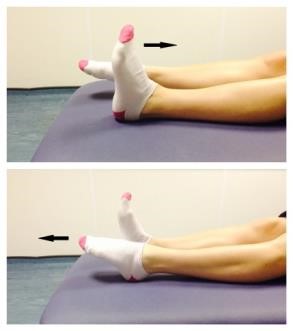
- With your heels together, move your toes apart to turn the foot outwards. Repeat this 10 times. Do this movement gently within comfort.
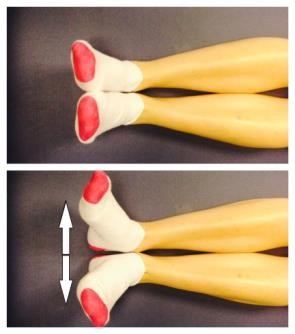
- Make gentle circles with your foot in one direction and then the other direction. Repeat this 10 times.
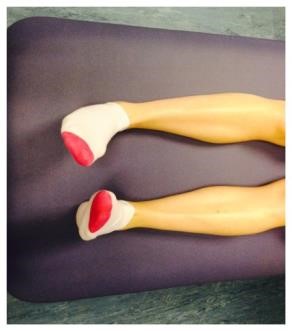
Caring for your injury: Weeks 2-6
You should now stop using your boot, if you haven’t already. Start by walking without the boot around your own home. Build up to walking without it outside or for longer walks. You should not be using your boot after 6 weeks post injury.
It is normal to still have mild discomfort and swelling. This may continue for 3-6 months.
Activity and Exercise
Gradually increase your level of activity. You should avoid impact activity for 3 months. This includes running and jumping. You can now progress your exercises.
Stretches
- Sit with your leg straight out in front of you. Put a towel or bandage around your foot and pull it towards you. Feel a stretch in the back of the calf. Hold for 30 seconds.

- Point your toes down as far as they go, place your other foot on top and apply some pressure. This will stretch the top of your foot. Hold for 30 seconds.
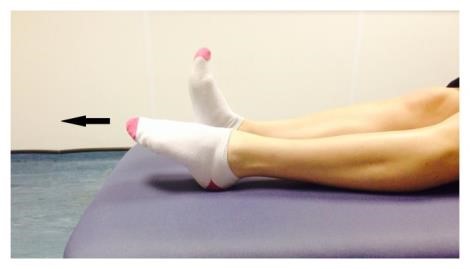
Balance
Level 1: These exercises are for people who couldn’t stand on one leg before their injury
- Stand with your feet as close together as possible. Hold onto a firm support in a safe space. Hold your balance for 30 seconds.
- Now try removing your hand. Try to keep your balance for 30 seconds.
- Hold onto a firm support. Put one foot in front of the other, as close together as you can. Hold this for 30 seconds. If you can, try to let go of the support and keep your balance.
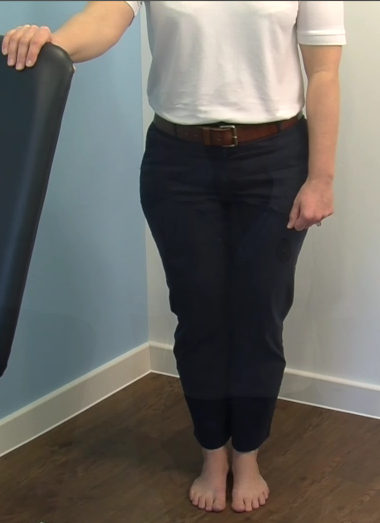
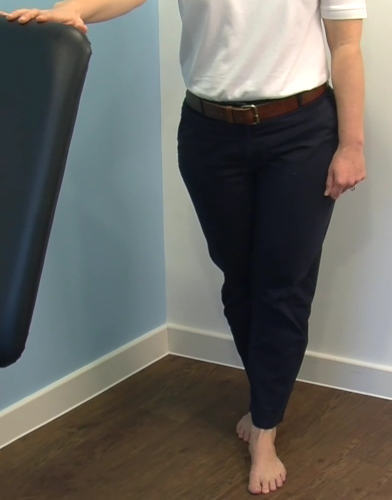
Level 2: These exercises are for people who could stand on one leg before their injury
- Hold onto a firm surface in a safe space. Try to stand on one leg. Hold this for 30 seconds. Stop if your experience pain. When you can do this comfortably, try the next exercise.
- Try to stand on one leg without holding on to a support. Try to hold this for 30 seconds. When you can do this comfortably, try the next exercise.
- You can try these exercises with your eyes closed. Make sure you are always in a safe environment with a support to hold if needed.
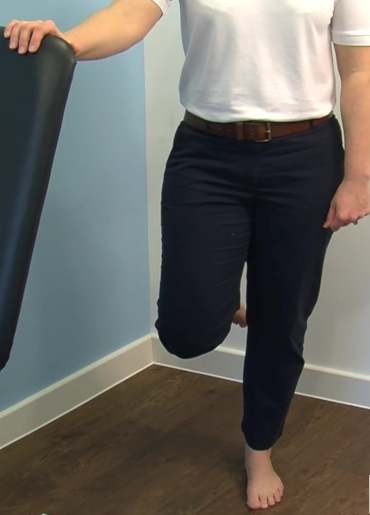
Frequently Asked Questions
I am struggling with my boot. What do I do?
The boot has a thicker sole; this can make you feel uneven. Make sure you wear a supportive shoe or trainer on your uninjured foot. This will reduce stress on other joints.
I am diabetic, does this change things?
If you are diabetic, please ensure you check your skin regularly for any wounds or skin breakdown.
When can I start driving?
You can return to driving when:
- You are no longer using your boot
- You can walk comfortably
- You can perform an emergency stop pain free
Always test your ability to drive in a safe environment first.
How can I get a certificate for work?
You can self-certify for the first 7 days following your injury. For any longer periods, please discuss the provision of a fitness to work statement with your GP.
what do I do with my boot and crutches when I no longer need them?
We are not able to use boots again. These should not be returned to the hospital. Crutches can be returned to the Emergency Department.
